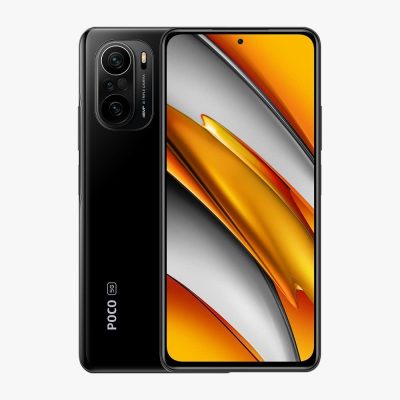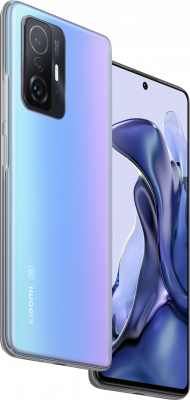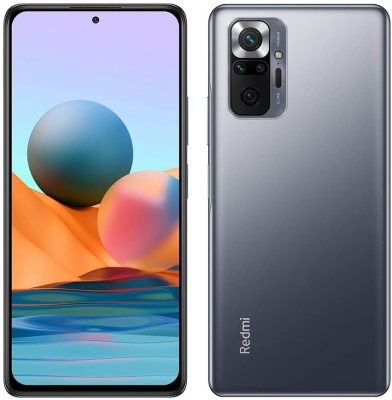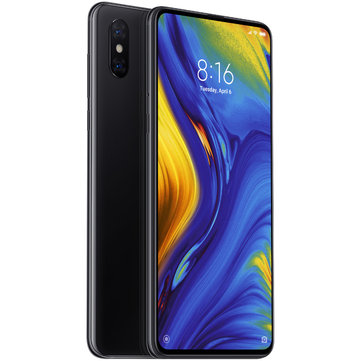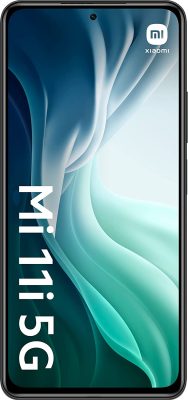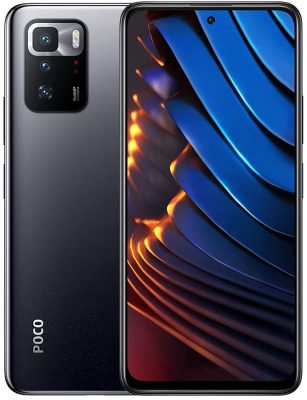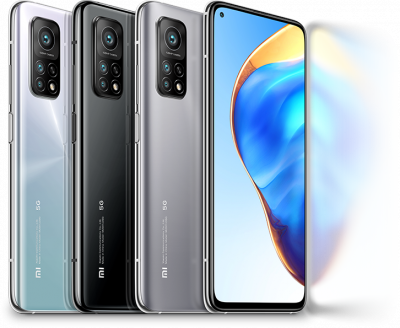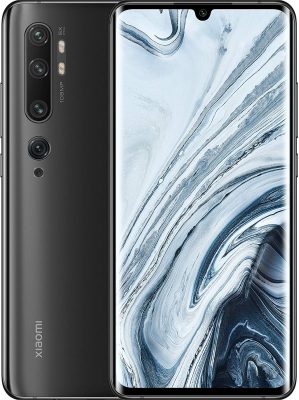Xiaomi phones are some of the best mobile companions to get nowadays. From being a nobody, the brand was able to easily clinch a significant share in consumer electronics for its wide selection of mobile phones. Their devices are usually touted as affordable alternatives in the Apple and Samsung-dominated market. But, they do also have high-end products running the latest specs and hardware that cost 60% less than other brands. So, if you’re looking for a high-quality and budget-friendly Android phone, Xiaomi is the best phone brand to consider. Affordable, flagship-killer specs, and elegant design — you won’t regret getting a Xiaomi phone.
However, it can be overwhelming to select which Xiaomi phone to get with new models coming out almost every few weeks. To save you from the leg work of comparing each model, we cherry-picked the leading Xiaomi phones and narrowed down your choices so you can keep up with the trend.
Best Xiaomi Phones in 2022
Choosing the right Xiaomi phone can be a challenge. There are many models to choose from, and each of which borders unique capabilities. However, you can base your decision on a myriad of factors such as display size, processor, camera, build quality, and price. To help you on your quest of finding the best Xiaomi phone, here’s a list of affordable premium Xiaomi phones you can buy this 2022.
| 1. Xiaomi Black Shark 4 | 6. Xiaomi Mi Mix 3 |
| 2. Xiaomi Mi 11 | 7. Xiaomi Mi 11i |
| 3. Xiaomi 11T | 8. Poco X3 GT |
| 4. Poco F3/ Mi 11X | 9. Xiaomi Mi 10T Pro |
| 5. Xiaomi Redmi Note 10 Pro | 10. Xiaomi Mi Note 10 |
Xiaomi is building a name in the mobile gaming world, and it does so with its Black Shark 4. At a mid-range price, it has the premium specs you would expect from an expensive gaming phone. It’s geared with a flagship Snapdragon 870 chipset and up to 12GB RAM, allowing users to play the latest games without lags or stutters. It can also multitask with smooth performance, regardless of the number of tabs you open at a time.
If you play games for hours, chances are your phone heats up, which disrupts your gaming momentum. Thankfully, Black Shark 4 has an upgraded “Sandwich” Liquid Cooling System that can reduce heat by 30% as advertised.
Its 6.67 Super AMOLED display at 144Hz refresh rate is something you can boast of as well. Although its HRR control is limited to 120Hz outside gaming, Black Shark’s visuals remain strikingly good compared to other phones of its price.
As for the camera, you’ll get a triple-lens shooter with 48 MP primary, an 8 MP ultrawide, and a 5 MP macro. These lenses work well in good lighting, but the quality isn’t as good in lowlight settings. The front cam, on the other hand, touts 20 MP resolution with decent beauty mode.
Of course, the Black Shark 4 have also some letdowns. One of those that we can not simply ignore is the downgraded battery from the previous Black Shark phone. A 4,500mAh-battery is not that bad per se. But for a gaming phone, it could have been higher to provide users a longer playtime. Black Shark 4’s battery is something you can easily get from a budget phone.
The Black Shark 4 has a pro version that uses a Snapdragon 888 and an improved camera system.
If you prefer a powerful Xiaomi that has the right balance of the latest specs and price, you should consider Xiaomi Mi 11.
The panel boasts a 6.81-inch AMOLED display with Corning Gorilla Glass Victus. It comes with Snapdragon 888, which can render enough power to run a dozen apps swiftly. Playing massive games is also a piece of cake with this chipset. If you’re a frequent gamer, however, the battery may become an issue. With 4600mAh, operating weighty apps and games can drain the battery quickly. Luckily, it supports Quick Charge 4+ and 50W fast wireless charging to boot.
You won’t have a problem with the camera since it employs a triple camera system. You’ll get 108-MP wide, 13 MP ultrawide, and 6 MP macro. A 20 MP resolution for the selfie shooter is also a gem to behold at this price point.
Another notable thing about Mi 11 is its speaker. It only has a single mounted speaker, but it produces clean and loud audio that could fill up a whole room. It has Hi-Res Audio certification, so you know its top-end quality.
Mi 11 is available at 128GB/6GB RAM, 128GB/8GB RAM, 256GB/8GB RAM, and 256GB/12GB RAM variants. The series also includes Ultra, Pro, and Lite versions.
If the Mi 11 is utterly expensive for your budget, you might want to get the Xiaomi 11T instead. It has reasonable specs and a cheaper price tag compared to most Mi 9 models. Despite losing some of the flagship features, it retained most of its top-grade components and even added a few tweaks.
The phone showcases a 6.67-inch AMOLED display with 1080 x 2400 resolution. It has a 120Hz refresh rate, but it’s as adaptive as Mi 11 because of the missing Dolby Vision. When it comes to the camera, the Xiaomi 11T retains the triple camera system from Mi 11 with very minimal changes.
The biggest lure of Xiaomi 11T is the battery. It’s a power-efficient mobile phone that would make Mi 11 a run for its money. Its 5000 mAh battery is further optimized by the chipset that the device is using. The swap from Snapdragon 888 to Dimensity 1200 makes Xiaomi 11T a lot less battery-draining than the Mi 11 series.
The Mi 11T comes in two variants: 128GB/8GB RAM and 256GB/8GB RAM
The Xiaomi Poco F3 closely resembles the Mi 11 but without the hefty price. Although it sacrifices some aspects of the performance, it is still a reliable device that can keep up with your daily activities. If you are someone who does not play heavy-loaded games on a mobile phone, the Poco F3 is one of the Xiaomi phones you should consider.
By paper and by performance, the Poco F3 is just the same as Mi 11X — a cheaper alternative that is not globally available. Both handsets have Snapdragon 870 chipset inside. They also have the same 6.67″ AMOLED display capable of 120Hz refresh rate and HDR10+. The distinction between the two, however, can be found in internal storage capacity. While the Mi 11X is limited to 128GB, the Poco F3 has 128GB and 256GB variations.
In terms of camera, the Poco F3 has a triple setup on the rear (48 MP wide, 8 MP ultrawide, and 5 MP macro). In front, it has a 20 MP wide-angle lens. We would say that these specs are not the most desirable for a mobile phone camera, but Poco F3’s price is a good bargain.
Redmi phones have become the benchmark for mid-range handsets. Thus, many units under this line have exceeded people’s expectations when it comes to high value and features. One of those devices includes Xiaomi Redmi Note 10 Pro.
Although a recent version of this device already exists, it doesn’t make the Redmi Note 10 Pro less worthy. In fact, you should not think of getting a Redmi Note 11 Pro if you already have the 10 Pro in your hand, given that their performance is not far off from each other.
With a 6.67-inch display, this phone doesn’t disappoint an all-rounder hunter. It’s also secured with Gorilla Glass 5, so you’re guaranteed the device has secured build. The Snapdragon 732G chipset powers the phone as well, serving as a reasonable choice for this pricepoint as it runs multiple apps, even the demanding tasks.
As for the shooters, you’ll get a rear camera with 108-MP wide-angle resolution, 8 MP ultrawide, 5 MP macro, and a 2 MP depth sensor. The selfie camera also works great since it has a 16 MP resolution. Redmi Note 10 Pro has a 5020 mAh non-removable battery, which is an advantage for a mid-range device. Also, it’s available in different variants: 64GB/6GB RAM, 128GB/6GB RAM, 128GB/8GB RAM.
If you’re looking for a decent and affordable Xiaomi phone that can access 5G, check out Xiaomi Mi Mix 3.
The Mi Mix 3 touts a 6.39-inch screen with 1080 x 2340 resolution. It’s one of Xiaomi phones that employ enhanced screen options as it includes a Super AMOLED display. Don’t worry, though, as it comes with a Corning Gorilla Glass 5 to ensure optimum protection.
As for the processor, the phone uses Snapdragon 845 chipset that grants a fluid experience for playing, viewing, and multitasking. Also, it runs on the optimized MIUI 10 on top of Android 9, so expect minimal software bugs and no delay even for frequent use.
The phone has a decent 3,200 mAh battery capacity, which is a notch on this price point as it can last a day even on hard use. Out of the box, you’ll get a USB-type C charger with support for Quick Charge 4.0. If you power up using this cable, the charging time only takes about one hour and 20 minutes until full.
There is also no 3.4mm headphone jack, so you’ll need Bluetooth earphones for a personal listening experience.
Mi Mix 3 has two rear shooters: a 12-MP main and a 12-MP telephoto. Photos produced during daylight are dynamic and have accurate details. However, outputs can get a bit noisy in lowlight settings. On the front, you’ll get a 24-MP camera with a 2-MP depth sensor. The selfie camera is packed in the slider, so the phone has more screen space. Additionally, you can choose from different variants: 6/8/10GB RAM and 128/256 of internal storage.
The Xiaomi Mi 11i blends in with the rest of Xiaomi’s selection, and there’s nothing that makes it really a standout. Let’s just say that it’s the downgraded version of Mi 11, although Mi 11 Lite is. That said, you should get Xiaomi Mi 11i if you are a bit tight on budget but want specs that are at par with the flagship model.
It keeps a premium chipset inside, the Snapdragon 888. Combined with 8GB RAM, Mi 11i is perfectly able to handle performance-hungry apps and mobile games. It also is visually stimulating, care of the bright and accurate Super AMOLED display with a 120Hz refresh rate. There is a small difference between Mi 11i and Mi 11’s ultrawide camera lens, but it’s the worst we’ve seen.
For its build quality, we would say that it is what you could expect from a midrange phone. Mi 11i has a decent IP rating against dust and splashes. However, its plastic material is not our favorite so far. You will also need a phone case for this one for sure because of its fingerprint magnet rear.
Poco X3 GT is a good value entry-level Xiaomi phone. For more or less $300, you will get a decently performing smartphone that is just right for your daily gadget needs.
Instead of the usual Snapdragon chipset, it uses Dimensity 1100 5G that sits very well with its graphics and display. Poco X3 GT’s 120Hz LCD is also one to adore — something you usually see on flagship models. We can’t also complain about its 8GB RAM and 128GB storage. You can even expand it up to 256GB if you want more.
Poco X3 GT’s triple main camera setup is something that can easily pass, although its selfie shooter is rather uninspiring. In terms of battery, it’s a little bit behind the Poco X3, but it impressed us with its 67W fast charging capability.
There’s already a newer version of the Mi T series, but 10T Pro doesn’t seem to go anywhere away from this list yet. There’s Mi 10T, Mi 10T Lite, and the Mi 10T Pro. We know what you’re thinking: what makes Mi 10T Pro special from the Mi 9 series? Here’s a hint — Mi 9T Pro combines all the good things from its line.
The handset touts a 6.67-inch IPS LCD panel with 1080 x 2400 resolution. A Corning Gorilla Glass 5 protects it for more excellent reliability. When it comes to the processor, the top-of-the-line Snapdragon 865 replaces the 855 from Mi 9T Pro. It’s combined with a whopping 5,000mAh battery power that can last more than a day on regular use. What’s more, it supports 33W fast charging.
The shooters won’t disappoint mobile photographers. Mi 9T Pro still employs the triple camera system with 108 MP wide, 13 ultrawide, and 5 MP macro lenses. For the selfie camera, it get rid of the motorized pop-up of the 9T Pro and got a little better at 20 MP.
You can choose from these variants: 128GB/8GB RAM, 256GB/8GB RAM
If you’re looking for a mobile snapper that’s synonymous with a DSLR’s quality, look no further than Xiaomi Mi Note 10. Released in late 2019, Mi Note 10 is the world’s first smartphone with a 108-MP rear Penta-camera system. It can deliver photos better than iPhone 11 Pro or Huawei P30. That said, expect to see photos with punchy colors and rich details no matter how many times you zoom in.
In addition to the 103-MP primary lens, you’ll get a 12-MP telephoto, 5-MP depth sensor, 20-MP ultrawide, and 2-MP macro. The selfie camera also employs a 20-MP resolution.
As for the display, you won’t be disappointed with its 6.47-inch AMOLED panel with a 1080 x 2340 resolution. However, the screen edges are curved like Samsung Galaxy S10.
When it comes to the processor, Mi Note 10 is powered by Snapdragon 730G. It isn’t much considering it accompanies a powerful camera setup. However, it runs apps and games smoothly, without further lags or stutters. The only drawback with this chipset is that it takes so long to process images.
The device is equipped with 5,260mAh and it comes with only one variant: 6GB RAM and 128GB internal storage.
Bottom Line
As you can see, Xiaomi phones are a tough contender in the mid-range competition. Most of its phones are crowned as “The Mid-Range King” since these devices boast an undeniably excellent quality on all smartphone criteria. From basic cheap phones to premium snappers, Xiaomi phones have everything in store for you. So, if you’re looking for a budget-friendly phone with top-grade specs and varied cellular capabilities, Xiaomi phones are the smartphone brand you must remember.



